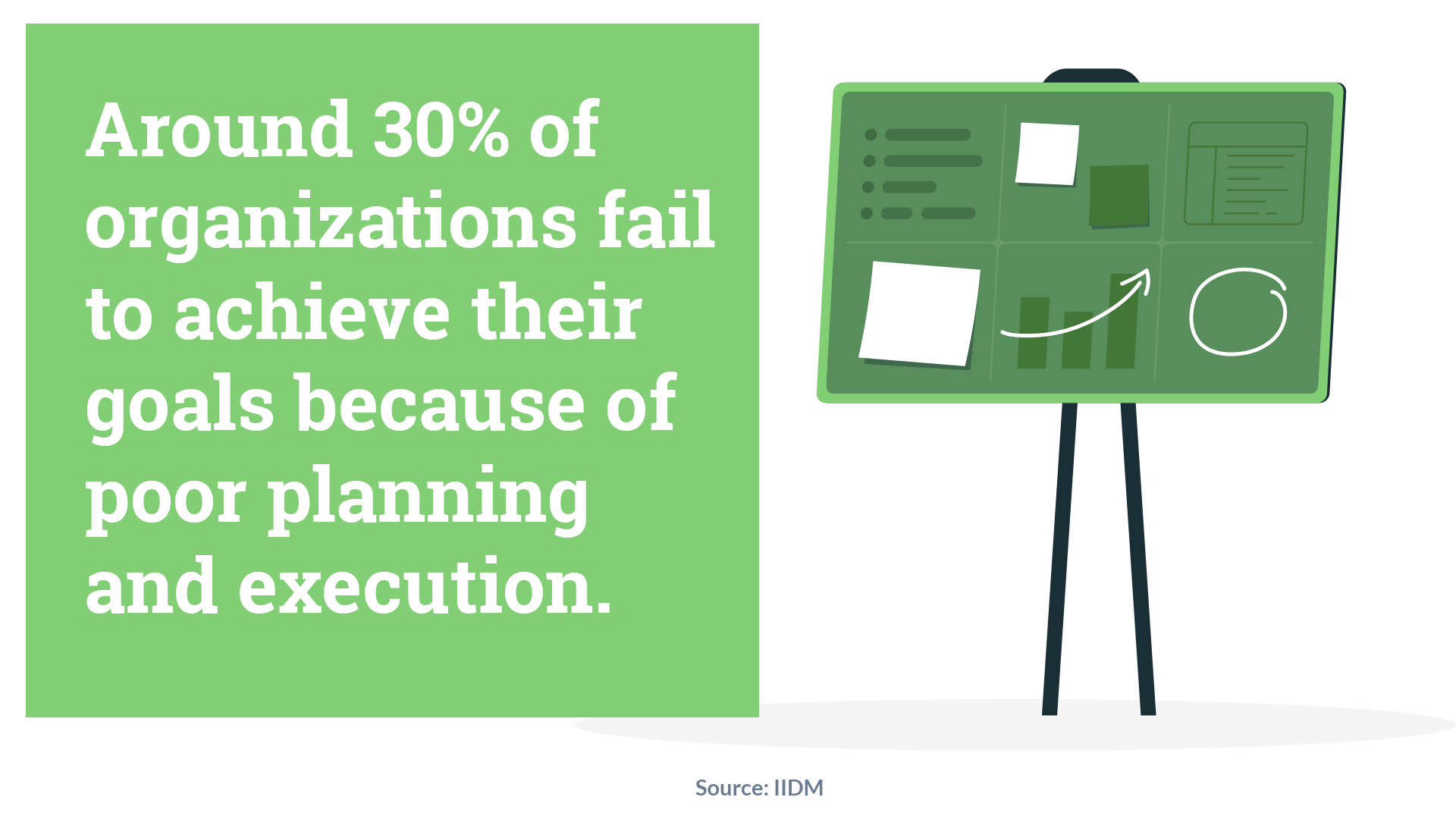4 Tips for Creating a Successful SWOT Analysis
In order to be a successful brand, you need to regularly evaluate your actions and processes to ensure that you are functioning as efficiently as possible. One of the most effective ways to achieve this is by analysing a company, goal, or objective using the SWOT analysis method.
If you don’t know what a SWOT analysis is, or perhaps you would like a little refresher, you’ve come to the right place.
What a SWOT analysis?
SWOT stands for strengths, weaknesses, opportunities, and threats. The development of the approach is credited to Albert Humphrey, who is said to have created the framework at the Stanford Research Institute (SRI) in the 1960s-1970s for the purpose of assessing and reinforcing business strategies.
A SWOT analysis is a useful tool for your marketing strategy, particularly when it comes to evaluating a new project, an objective, or to analyse the business as a whole. It acts as a roadmap that details areas in which you excel, where you can improve, your potential opportunities, and any challenges you can (or may need to) tackle.

At the end of the day, it’s not enough for a company to simply ‘exist’. You have to maximise your opportunities, minimise negative factors, make well-informed decisions, and generally be aware of the ever-changing market and its potential impacts. Regularly conducting a SWOT analysis ensures that you achieve all of this.
Let’s take a deeper look into each aspect of the SWOT analysis:
Strengths
Your strengths are what your company does particularly well, or ways in which you are positively distinguished from your competitors. This could be your manufacturing process, your social media presence, your customer care regime, your highly skilled and knowledgable employees or the ways in which you motivate your staff. It can also be tangible assets, like technologies, software, capital or office/store locations.
As well as analysing your company internally by looking at your unique selling point (USP), your resources, your assets, or your adaptability, it’s important for you to try and visualise the company through the eyes of your customers and prospects.
Analysing your strengths helps you to understand how and where your company excels, so consider what makes you function and flourish - keep doing it and experiment with ways that could potentially boost or add to these qualities.
Example:
"We have a loyal base of customers who continue to shop with us and support us."

Questions to consider:
1. What do your customers love about your company or product?
2. What resources do you have that your competitors do not have?
3. What is your USP?
4. What does your company do that is better than others in your industry?
Weaknesses
You need to be truthful and quite self-aware when analysing your company’s weaknesses, no matter how hard it is to face the facts. The point of a SWOT analysis is to evaluate your projects, goals, objectives, or the whole company and make decisions based on actionable insights.
Look at your branding, your social media statistics, your employees, your resources, systems, practices, and procedures. Complete a competitor analysis - are there areas where your competitors are outdoing you? As you did with your strengths, try to look at the company through the eyes of your customers, prospects, and competitors: how do others experience your activities, products, or services, and how are you seen in the market?
If your competitors are exceeding in areas you are not, investigate what you’re lacking or where you’re falling short. If your sales are remaining static, explore ways in which you can actively improve. If you are losing employees, ask for honest feedback, and conduct research on how to improve employee wellness.
Identifying your weaknesses keeps you switched on and presents opportunities for improvement.
Example:
"Our team is lacking employees that are highly skilled with the expertise needed to help us achieve success."
Questions to consider:
1. Why do your customers stop buying from you?
2. What are the common complaints you receive from your customers?
3. What are the biggest obstacles or challenges in your current sales funnel?
4. Are your staff fully trained, skilled and knowledgable?
Opportunities
Opportunities are chances open to the business that will benefit, positively impact, or contribute to your business’s success in some way.
These favourable factors can arise independently but conducting a SWOT analysis allows you to identify and exploit opportunities in a way that is direct and strategic. This section of the SWOT analysis more often than not refers to factors that are external to the business. Opportunities could stem from market changes, societal trends, failures of your competitors, or advancements in technology.
Identifying and acting upon opportunities that are open to you can make a huge difference to your company, its current objectives, and future goals.
Example:
"We will soon be relocating to a more central head office in a better location and have a better opportunity to attract more experienced staff and reduce travel times for our current staff."
Questions to consider:
1. How can we improve our processes?
2. Are there any major legislation changes on the way that we could take advantage of to improve our business?
3. Are there any new technologies that we can make use of?
4. Are there any new trends in the market that we can adapt our product/service for?
Threats
Threats are obstacles or anything external that could negatively impact your business.
Unfortunately, threats are something that you rarely have control over, such as market shifts, supply chain issues, changes in consumer behaviour or trends, competitor actions, digital disruption, etc. However, something like new and emerging technologies acts as both an opportunity and a threat; giving you the option to progress or fall by the wayside.
Failing to accurately identify threats can be hugely detrimental to your business - so make sure you stay on the ball and regularly analyse your brand, your competitors, and the wider market.
Example:
"There is a new competitor on the market offering a similar product to ours."
Questions to consider:
1. Are there potential competitors who are a big threat?
2. Are your key employees satisfied with their wages and workplace benefits?
3. Is there any chance of a natural disaster affecting your production/manufacturing/distribution?
4. Has your company done anything that could lead to a possible lawsuit?
Here is an example of a SWOT analysis using The Coco-Cola Company.

4 Tips for Creating a Successful SWOT Analysis:
1. Get to know the template
The SWOT analysis template is simple - 4 empty white boxes with a heading above each; Strengths, Weaknesses, Opportunities, Threats. While the template itself is simple, it can be tough to get started. So we've added some essential questions in each box that will help you get started and give you a good idea of what you need to address in order to successfully complete your analysis:

First thing’s first. You may have seen the SWOT template before, that’s because it is the most commonly used format when it comes to visually conducting a SWOT analysis. It’s a classic!
It’s no secret that a lot of people are visual learners, at least it doesn’t hurt to outline your thoughts visually, and this table really does the trick. Additionally, having them in a neat grid format, rather than a long list, makes it easy to compare each element: for example, your strengths are situated just above your opportunities, this makes it easier to identify any strengths that could be positively turned into opportunities. Similarly, your threats are just below your weaknesses, meaning you can see if there is a correlation between the two - are there any weaknesses in your business that you can amend in order to avoid them becoming threats?
2. Clearly identify goals & objectives
It’s super important to get to know your brand, your competitors, your market, etc., as best you can, we know that! But you must have a wider vision. You can conduct 100s of SWOT analyses but they’re only truly meaningful if you have clear goals and objectives. By clear, we mean goals that are S.M.A.R.T: Specific, Measurable, Achievable, Realistic/Relevant, and Time-bound.
Of course, if you’re conducting a SWOT analysis simply to better understand your business, that’s also highly beneficial. Particularly when it comes to getting an overview of the company as a whole and your position in the market. However, when it comes to understanding how achievable your goals and objectives are, and the actions, precautions, and general steps you can make in reaching them, the SWOT analysis is one of the most practical methods.
3. Conduct brainstorming sessions
You might have great ideas of your own, but people often think in different ways which means, you guessed it, added variety. Brainstorming helps to focus a wide range of ideas giving you a greater span of knowledge and opening your business up to diverse paths. Similarly, it would be fair to understand that a marketing department, for example, won’t know the deep intricacies of a sales department, or computer development team. Brainstorming between your own and different departments brings new and interesting ideas, opinions, and insights that you possibly wouldn’t have had as a solo-brainstormer.
The extra knowledge gained through brainstorming offers your business a wider range of actionable insights that undoubtedly help to streamline your SWOT analysis (as well as bringing the team closer together and strengthening the brand!).

4. Regularly analyse your competitors
One of the main threats facing most businesses is their competitors. Of course, your competitors don’t have access to your intimate business plan which divulges all of your long and short-term goals, no. But your competitors can analyse your products, services, content, website, social media, online reviews, and so on.
Most businesses regularly research and create a competitor analysis, which is why we would advise you to do the same! It’s important for you to look into everything, but begin by asking these key questions:
- What is their product or service? Is it seen as high-end, low-cost, or middle-of-the-range? What are its features?
- What is their mission or key message?
- Are they an e-commerce store or brick-and-mortar? If both, how do their online and offline experiences compare?
- What is their pricing structure?
- Which channels do they use to interact with their audience?
- Do they offer discounts, promotions, or loyalty schemes?
- What are their primary marketing tactics?
And remember that conducting a SWOT analysis isn’t just for your business, your goals, or your objectives; you can (and should) conduct a SWOT analysis on your competitors, too!
So, you’ve completed your SWOT analysis: you’ve used your handy template, identified your goals & objectives, had a number of killer brainstorming sessions, and you’ve conducted a thorough competitor analysis, perfect! Now that you’ve done all of your wonderful research, you need to act upon the results. That’s right, all of your hard work isn’t just for nothing. The goals and objectives you mentioned? It’s time to go and get ‘em.
Conclusion
While you’re chasing the goals and objectives you’ve rightfully aimed for, it’s important to remember that it’s not just about making that sale. Conducting a SWOT analysis is also about creating a business that is strong, longevous, reliable, transparent, and that customers can truly trust. So, whether you’re a small startup or a company that’s part of the Fortune 500, a SWOT analysis leads to fact-based examination, fresh perspectives, and new ideas.
Share this
You May Also Like
These Related Stories

How to Complete Your First Competitor Analysis
.jpg)
10 Competitor Analysis Tools Every Marketer Needs
-3.png)



